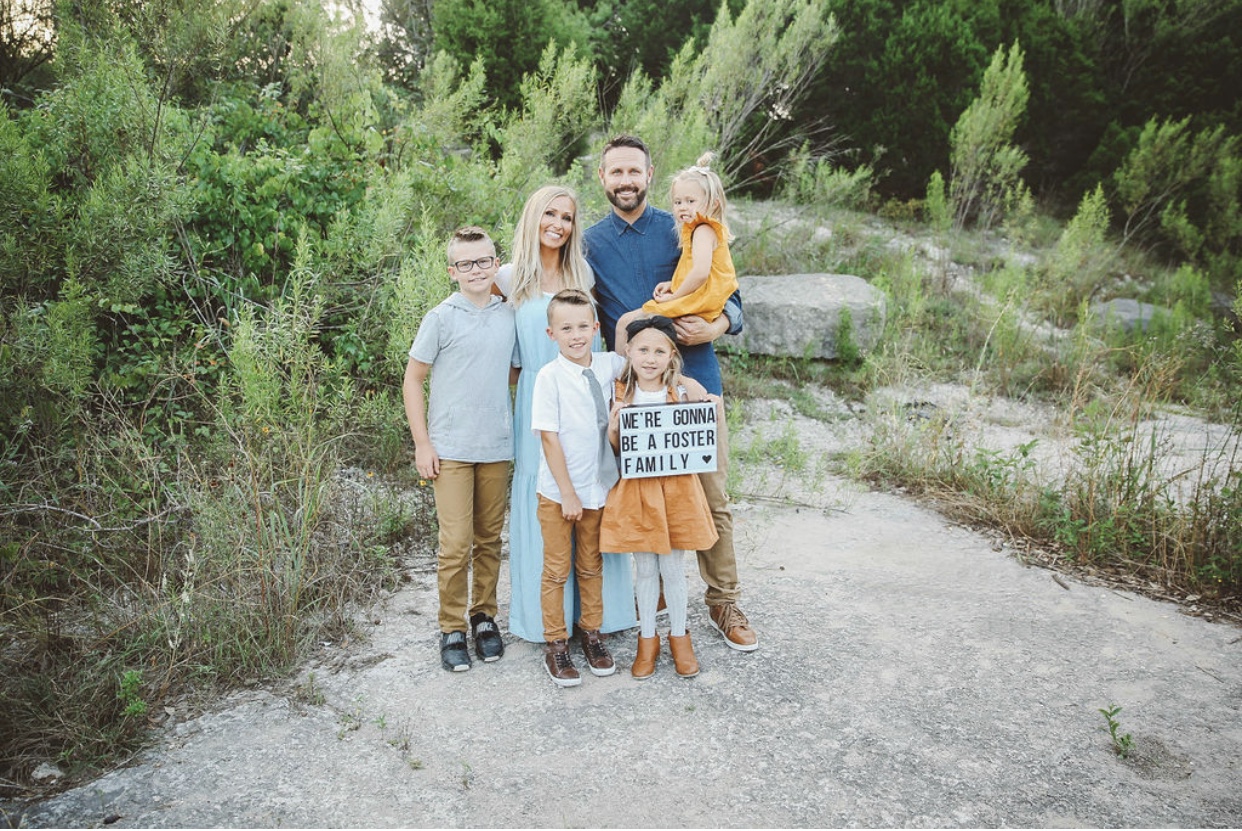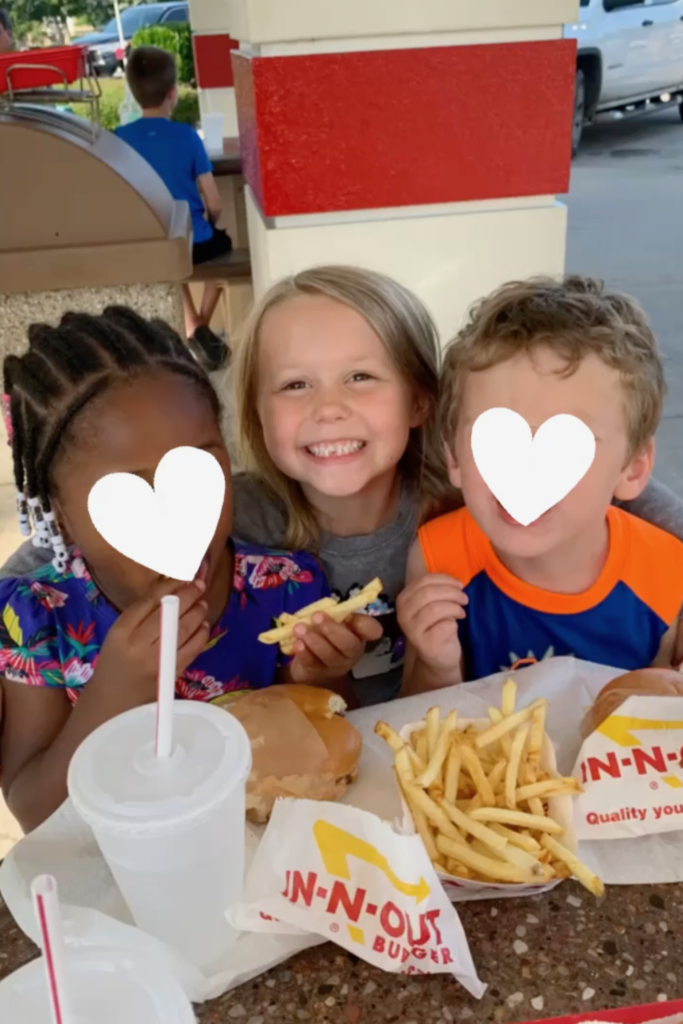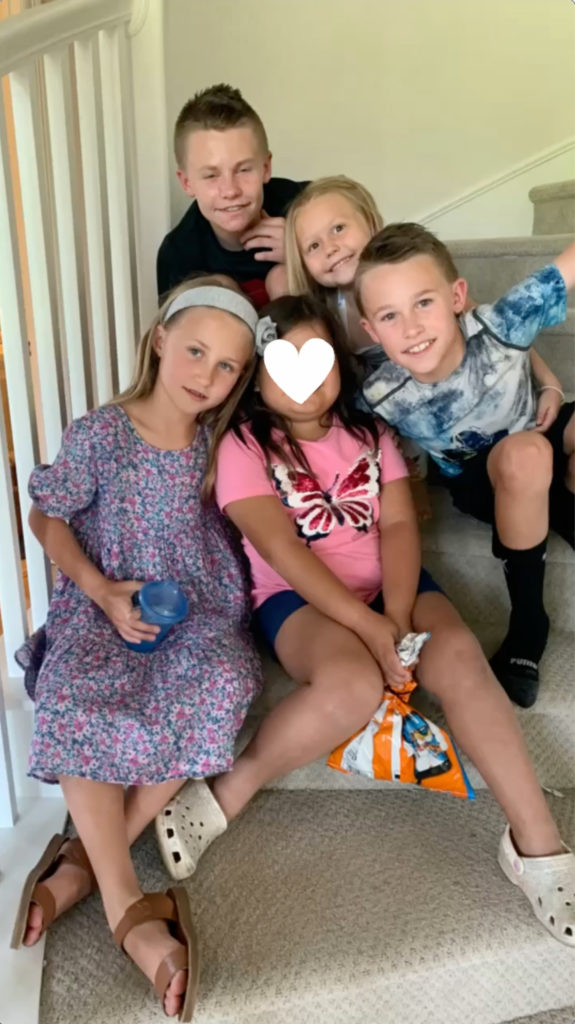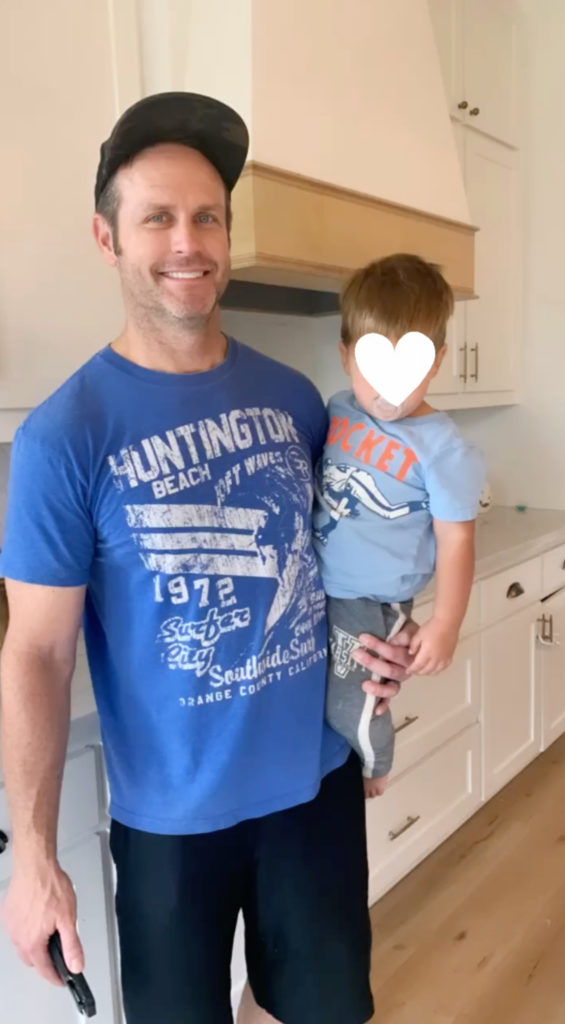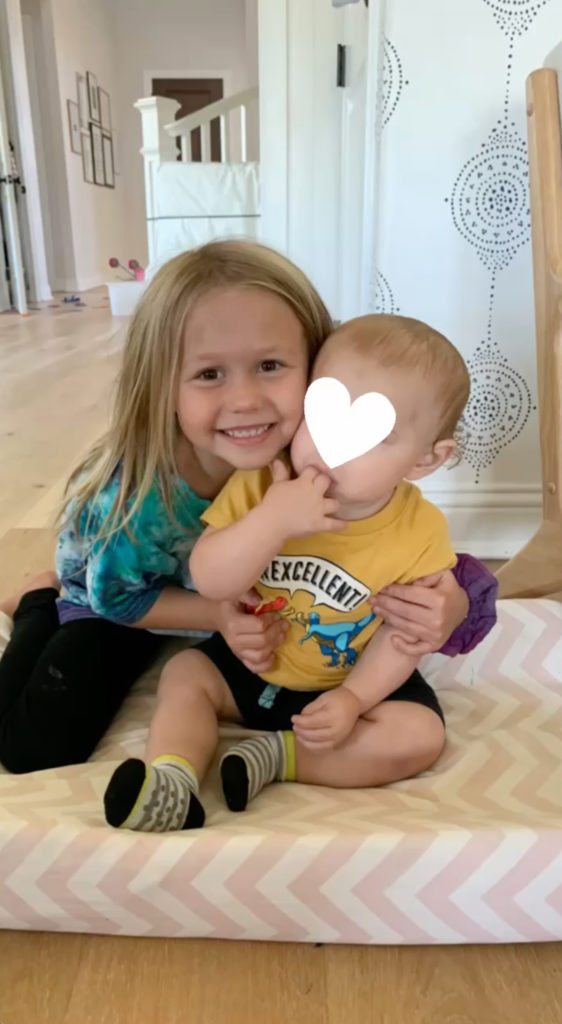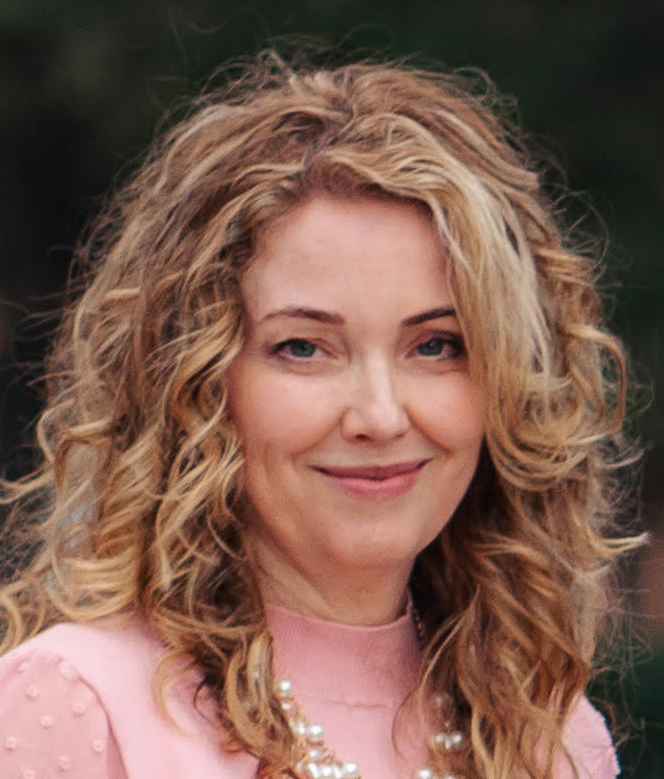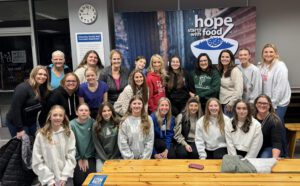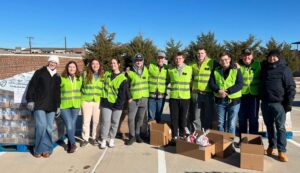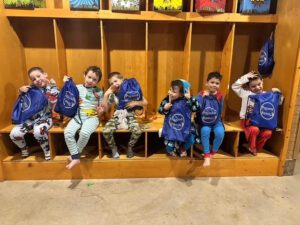Foster Parenting: Stepping into Uncertainty and Finding Connection
May is National Foster Care Month. This is the third article in a three-part series about the topic. Read Part 1 and Part 2. Watch video HERE.
Featured Photo: James and Kristina Hillstrom and their children announce their licensing to become a foster family. Photo courtesy of Kristina Hillstrom.
Prosper, Texas. Kristina Hillstrom knows how to listen to her heart. Over time it has pointed her to an increased involvement in the foster care community, first as a thoughtful pupil of others’ life experiences, next as a foster parent, and now as an advocate for all foster children and families. For her, it is all about connection.
“I think there are a lot of misconceptions about foster care. I had them myself,” says Hillstrom. “It’s easy to have these stereotypes, and you assume that the children will be this way, or the biological parents will be one way, and I think becoming a foster parent—or even just stepping into this space—has been so humbling. I’ve realized that we’re so much more connected than we realize we are as humans.”
Hillstrom first sparked her connection to the foster care community in 2004 when she served for several months in Ecuadorian orphanages. It was the first time she had seen such widespread evidence of broken families and heartbreak. “But even more powerful than all the heartbreak,” she reflects, “was more that these kids were just so sweet. They were so easy to love, and they loved so easily.” She felt inspired by their resilience and never forgot the experience of confronting their vulnerability, even as she returned home, married her husband James, and eventually had four children of their own.
Although traditional orphanages in the United States disappeared by the 1960s, Hillstrom knew that broken families still needed help right here at home. “For a long time, I carried my passions quietly with me until I realized that passions are not random, God has planted them in our hearts for a reason.”
Despite the consistent tug on her heart, she was not sure how to help. The answer came to her one day through a radio advertisement for CASA, the volunteer organization that provides Court Appointed Special Advocates for children in the foster care system. Hillstrom recalls, “I decided, ‘I’m just going to stop in [at the CASA office], and I have no idea what I’m going to say.’ But I was very prayerful; I remember in the parking lot saying a prayer and just going in and saying, ‘Hi, I feel like I need to be involved. What can I do?’”
Hillstrom underlines that while it is sometimes intimidating to take that first step of outreach, every organization is grateful for someone’s effort and will always find a role that fits the needs of the volunteer and the organization.
As Hillstrom became involved with the fundraising side of CASA, she wanted to learn everything she could about the foster care system. She says, “I just started researching online. Social media was a great avenue, reaching out to different nonprofits…meeting foster parents on Instagram and getting in touch with former foster youth, going to lunch with them, and just [wanting] to learn as much as I could about each individual perspective, each individual story, and kind of how it all fit together.”
Hillstrom appreciated the ability to connect with others on social media so much that she eventually created a dedicated foster care community space of her own on Instagram and a blog she chose to call Amity and Anthem. Her goal is to share stories that uplift, empower, increase love, and inspire action. “There are foster families, former foster youth, a lot of different stories and perspectives are on there. It’s been an incredible resource for me,” she explains. “If I listen with my heart, something amazing happens. Suddenly, these people resemble someone completely different, and I can see myself and my struggles in their journey. Distance is replaced with compassion, assumptions are replaced with admiration, criticism is replaced with connection.”
For Hillstrom and her family, this connection became so compelling that they decided to get involved on a deeper level. Kristina and James became licensed foster parents in 2020, completing their training via Zoom. The next step was to go on an “open homes” list and wait for that first phone call. When child neglect or abuse is reported to the authorities, the Texas Department of Family and Protective Services reaches out to open homes via partner agencies to find a family who can take on a foster child or group of siblings.
“You never really know if the placements will be long-term or not,” says Hillstrom. But she advises that new foster parents have a well-developed list of questions to ask when they receive a placement call. “You can get as much information as they have. Sometimes their information is limited.” She clarifies, “You can be very specific about what you feel comfortable with or what you don’t feel comfortable with, so you can select age range, gender, ethnicity… You can even say, I don’t feel comfortable with this sort of trauma or medical needs. You have so much opportunity to say specifically what fits right for your family.”
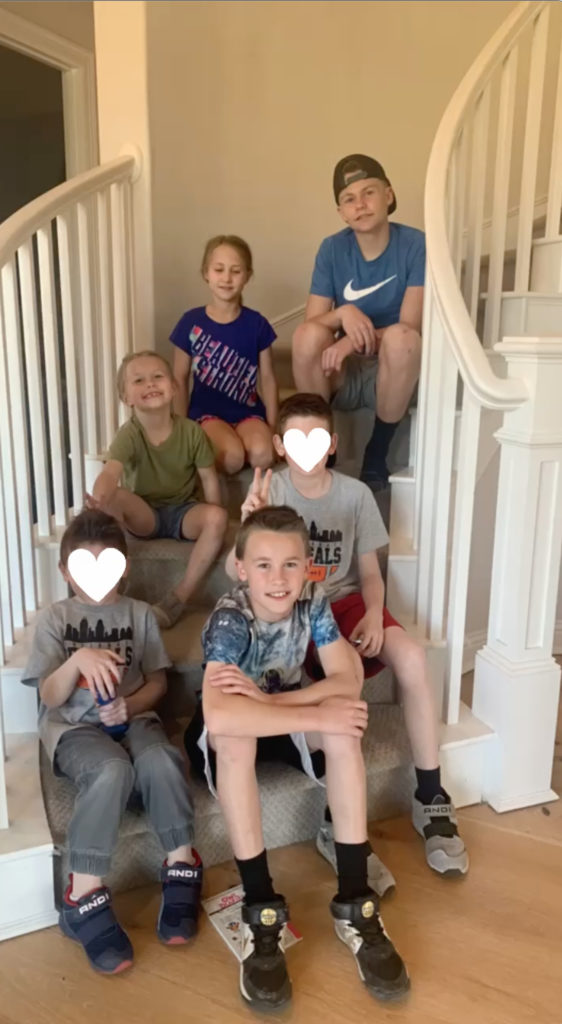
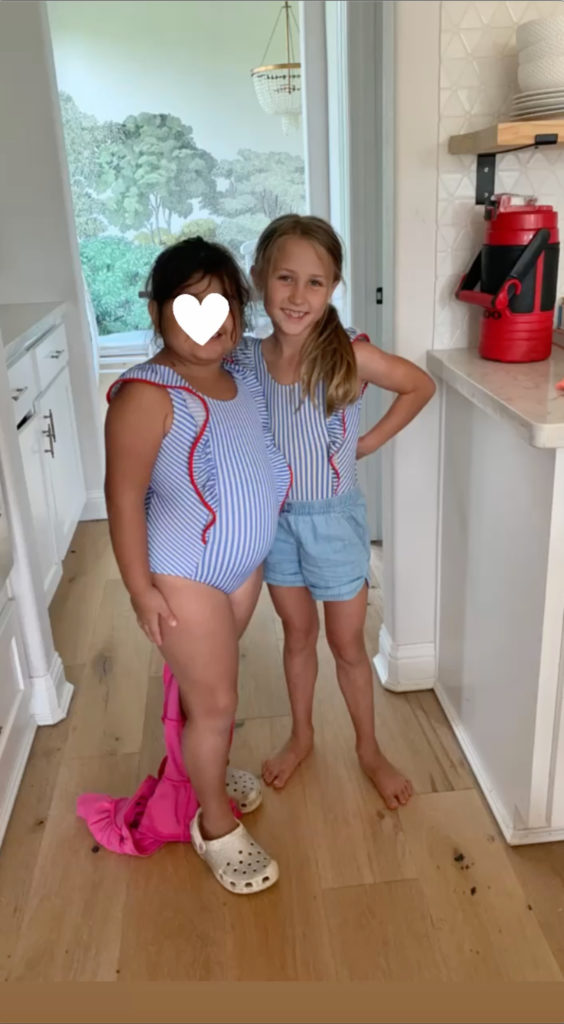
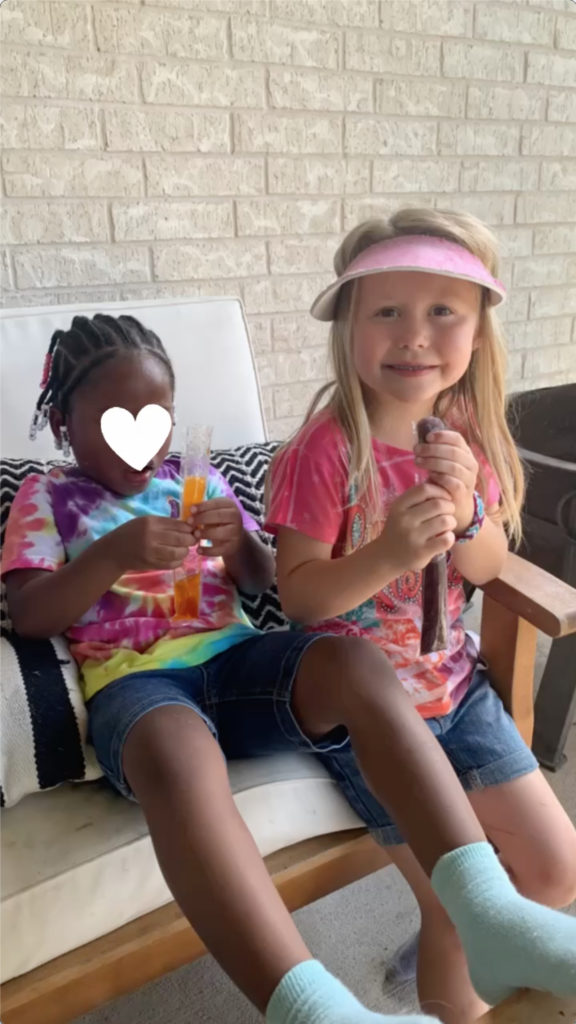
Hillstrom says that their family quickly learned what worked best in receiving new foster children in their home, such as having toys ready for play and giving them a tour of the house so that they know where the bathroom is, where the snacks are, or “things that they maybe haven’t had in their regular home that makes them feel a little more secure and safe.”
Respite care for a foster child when the long-term foster family has an emergency or family vacation is a good starting place for those who want to assist foster children, Hillstrom says. Her family has loved having the opportunity to meet many different children this way and contribute to their physical and emotional wellbeing.
Hillstrom acknowledges that it is easy to be overwhelmed by the enormity of the number of children in foster care (about 407,000 according to the latest report by the Children’s Bureau, an office of the U.S. Department of Health & Human Services). But as she puts it, “Every number has a name and a face and a story, and it’s a child with…hopes and dreams and fears. You just can’t not be moved to action when you think of it that way.” Hillstrom continues, “If there is a cause worth fighting for, it’s children.… Every single child deserves to be loved and to feel loved. I have found that we don’t have to engage in big dramatic events to make an impact. I have seen the most powerful things done in the quiet interactions, the reaching out, the lifting up. Sometimes the seemingly small, day-to-day moments that connect us as humans can mean the most to someone suffering. We can’t carry everyone home, but we can walk with them.”
There isn’t a person you wouldn’t love if you could read their story.
Marjorie Hinckley
What is on her list of actions to support a child or family in need? “There is a place for everyone in this cause because there are so many different [ways] that you can contribute,” says Hillstrom. “I’m a huge believer in just prayer, and that’s something. We can always keep these children in our prayers.” She also suggests finding foster families or former foster youth in the community as well as the organizations that work with them, reaching out to ask how one can best provide friendship or support—much as she did on that first day visiting a CASA office.
And Hillstrom emphasizes that simply increased awareness is beneficial. “I think we underestimate just being educated on what the foster care system looks like and being aware and starting conversations. The more we talk about it, the more likely people are going to be moved to action and then it benefits the kids. We can’t do everything, but we can do something, and we must.”
Hillstrom particularly highlights National Angels, a nationwide nonprofit organization with the mission of wrapping the community around those who are already serving children in need. As she explains it, foster children move about seven times in a two-year period: “[Moving] is hard [even on] a child in a safe, secure home. It’s a new beginning. It’s new faces, new family, new house, new school—so it’s really devastating.” But if foster families feel more support from the community at large through mentoring and relationship building, they are more likely to continue a long-term placement and provide more stability for the children. National Angels is a way to involve the whole family in a good cause, forging lasting friendships, removing barriers to understanding, and teaching a sense of responsibility to others.
Hillstrom, a member of The Church of Jesus Christ of Latter-day Saints, shares why she continues to serve as a foster parent and advocate for children: “[It] is absolutely my faith in Jesus Christ. I feel like this whole journey for me has been trying to be prayerful and trying to just be a very imperfect, humble instrument in His hands… Jesus Christ [is] counting on us to step in and to be His hands, and especially as a mother, as a woman, I feel that we have this beautiful sacred responsibility and role to not only look after our own biological children but look after all children.”
During her family’s first experience fostering, which were two young brothers, ages four and two, Hillstrom initiated some correspondence with the boys’ biological mother, who replied with “four pages of a mother’s undying love for her children—how sorry she was, how embarrassed she was, how much she missed them and how hard she was working to get them back…. In that moment, all the things that seemed to separate us, or all our differences, were completely irrelevant. It was just two moms who would do anything for their children. [It] was such a powerful connection that I never want to forget.”

Hillstrom and her family feel that they have gained more blessings than they have ever contributed to any child’s life. “They’ve taught us so much,” she says. Yes, sometimes it is overwhelming, “because you are stepping into things that are complicated, things that are messy, things that are sad, and things that are broken,” she muses. “As I’ve thought about that, and about my Savior Jesus Christ and His life and ministry, He always was seeking out the people that were broken and the people that were messy and complicated, and that’s where He focused his love. It’s been an inspiring reminder to me that when we step outside of our comfort zone and we have the power of prayer and the companionship of our Savior, we can do things on His behalf and make an impact.”
Hillstrom will keep following her heart, and she invites others to listen to theirs too. In seeking connection with foster children and families, taking time to get to know them and their needs, she thinks a favorite quote by Marjorie Hinckley sums it up well: “There isn’t a person you wouldn’t love if you could read their story.”
Kara Schofield lives with her husband, nearly grown youngest, and the family doodle in the Prosper Texas Stake of The Church of Jesus Christ of Latter-day Saints. She can often be found at one keyboard or another: writing, documenting personal and family history, accompanying school choirs, and learning how to play jazz music. Her greatest joys are her four children and their spouses, a sizable extended family, pies, mountains, and Jesus Christ.

